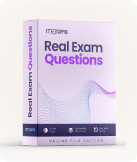Juniper JN0-347 - Enterprise Routing and Switching, Specialist (JNCIS-ENT) Exam
Page: 1 / 28
Total 136 questions
Question #1 (Topic: Single Topic)
Which two statements describe aggregate routes? (Choose two.)
A. Invalid routing prefixes are not advertised to external peers.
B. Internal routing instabilities can be hidden from external peers
C. Groups of routes are combined into a single route entry.
D. The route receives the next hop of the primary contributing route.
Answer: BD
Question #2 (Topic: Single Topic)
You are configuring a new BGP service to your service provider. You want to ensure that BGP is fully established and has all the routes in the route table before
allowing traffic to transit the router.
Which feature achieves this requirement?
allowing traffic to transit the router.
Which feature achieves this requirement?
A. BGP route reflector
B. IS-IS mesh group
C. BGP local preference
D. IS-IS overload bit
Answer: D
Question #3 (Topic: Single Topic)
Which LSA type describes the router ID of ASBR routers located in remote areas?
A. Type 4
B. Type 5
C. Type 3
D. Type 7
Answer: A
Question #4 (Topic: Single Topic)
Which two statements are true about Virtual Chassis? (Choose two.)
A. It is possible to automatically update the Junos OS on newly added members to participate in the Virtual Chassis
B. A software version mismatch on a newly added member must be placed in linecard mode.
C. Virtual Chassis members use VCCP to create a loop-free topology.
D. The member ID is not preserved through reboots.
Answer: AC
Question #5 (Topic: Single Topic)
Click the Exhibit button.

You are monitoring your IS-IS router and issue the command shown in the exhibit.
Which two statements are true in this scenario? (Choose two.)

You are monitoring your IS-IS router and issue the command shown in the exhibit.
Which two statements are true in this scenario? (Choose two.)
A. The loopback address of the local router is 5.0.0.100.
B. The loopback address of the local router is 10.100.0.1.
C. The name of the remote device is r1.
D. The name of the local device is r1.
Answer: BC
